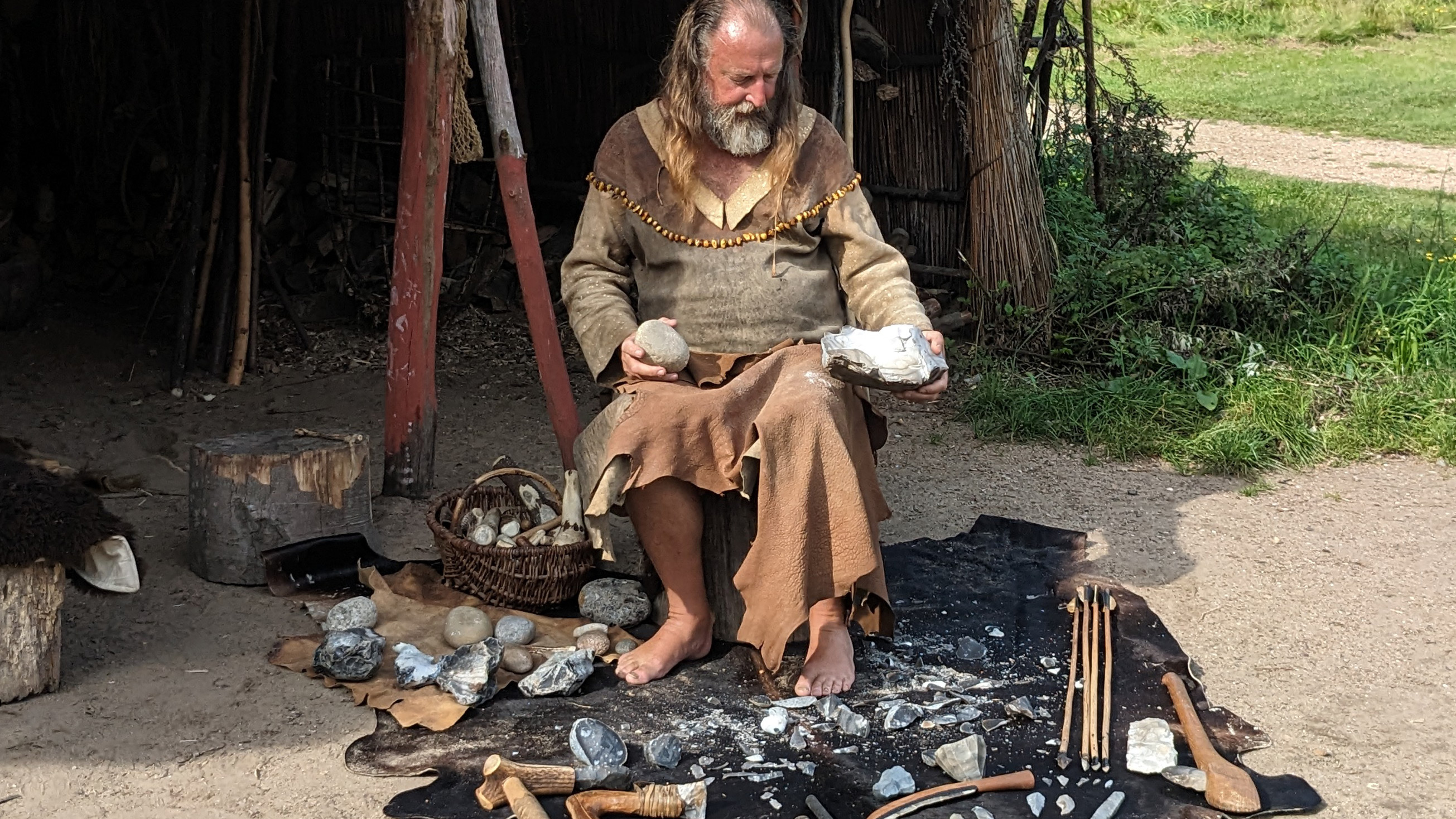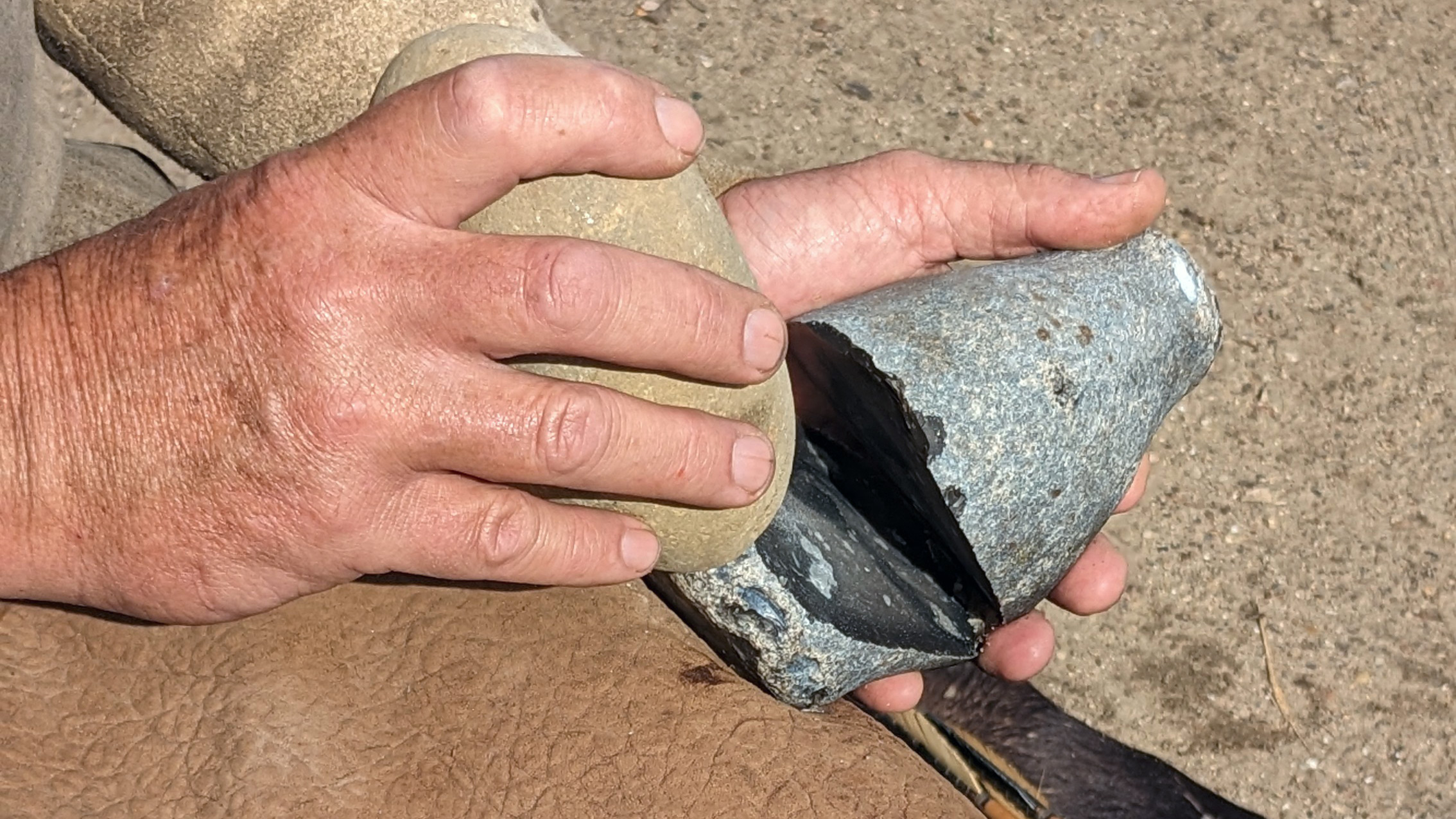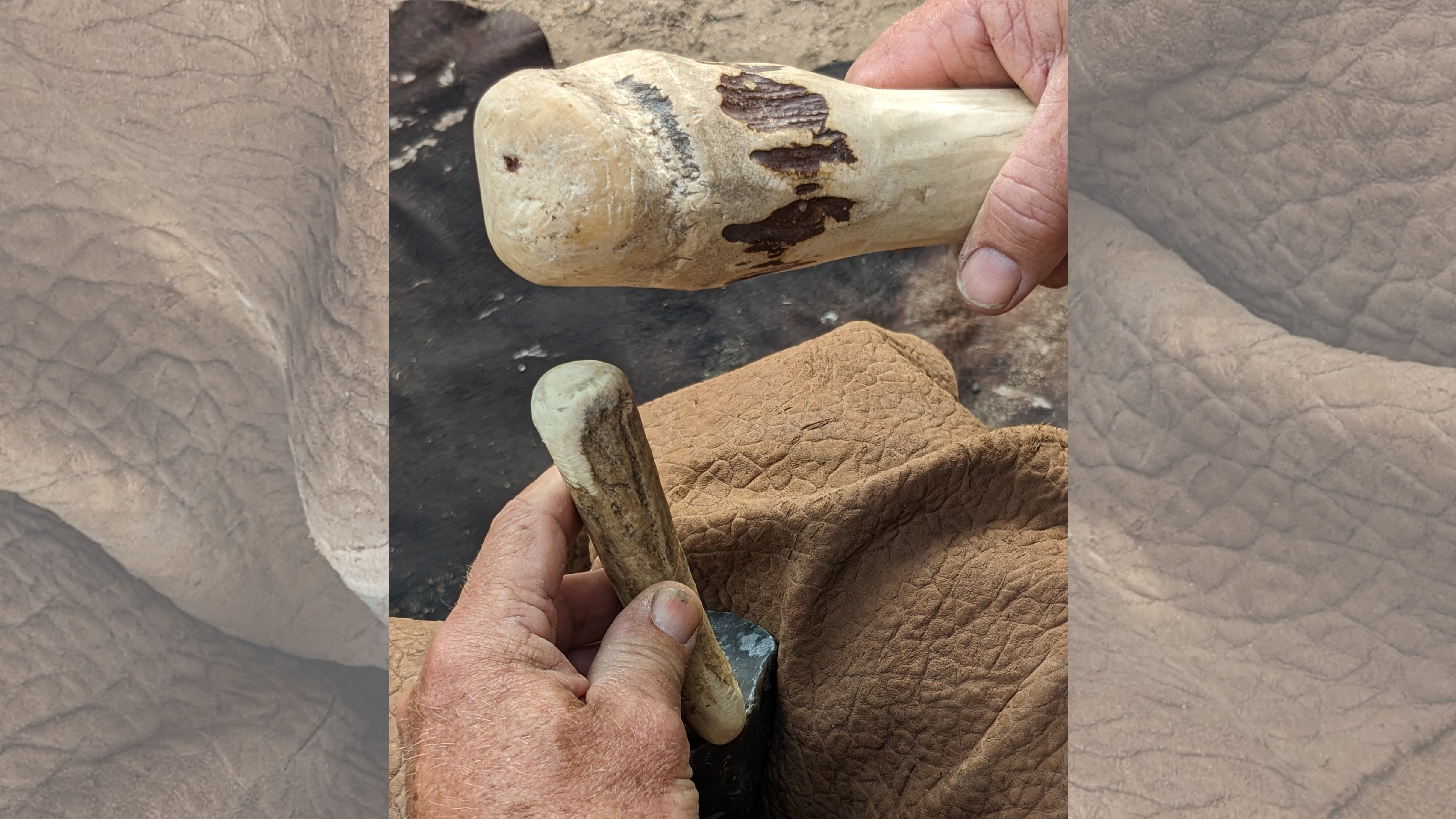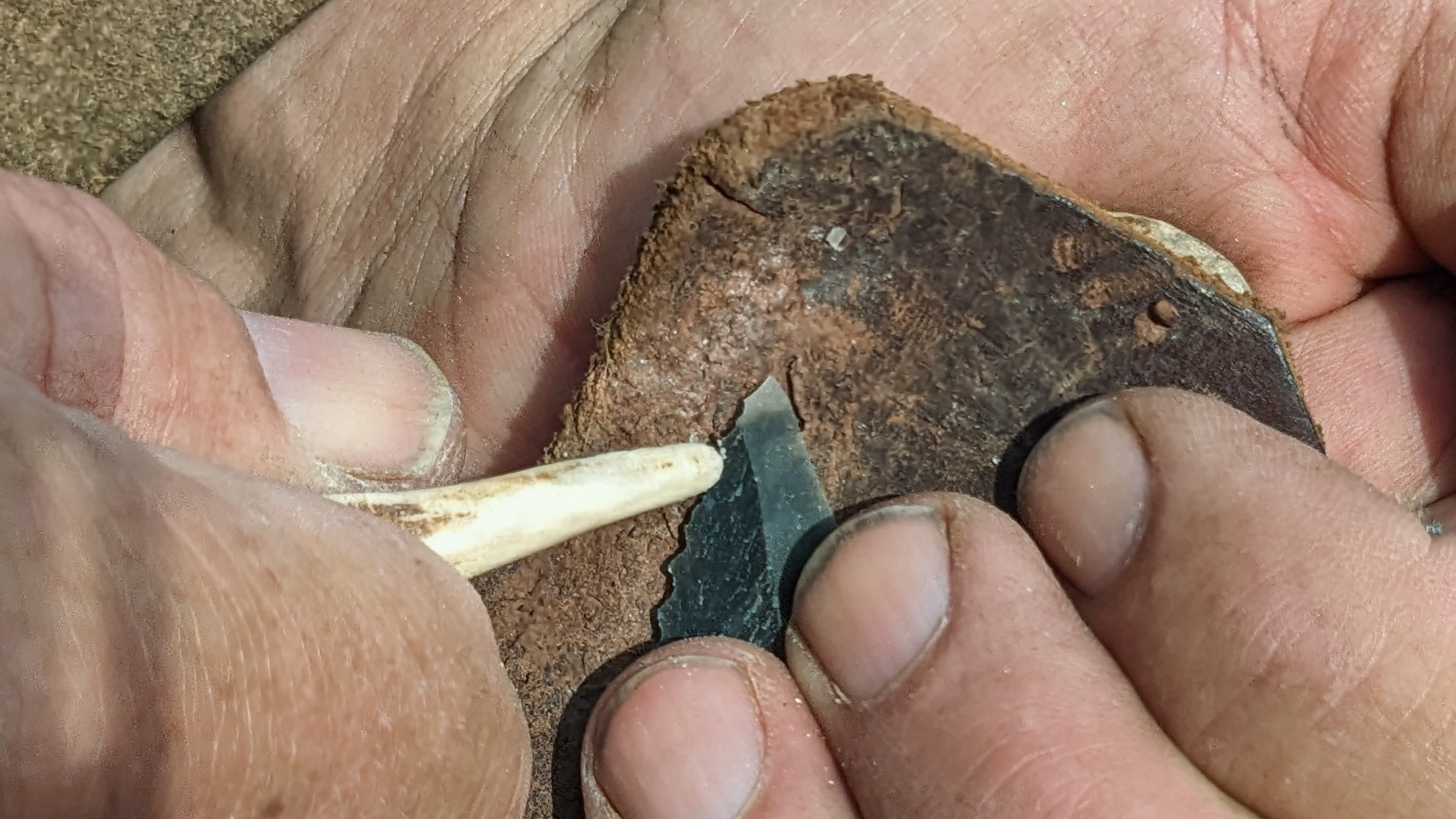Flint Knapping in the Stone Age Park Dithmarschen (DE)

Name of the craft in English: Flint knapping
Name of the craft in local language: Feuersteinschlagen
Local Language: German
Type of craft:
Archaeological (craft is no longer widely practised, mainly based on archaeological sources)
Category of craft: Stone crafts
Short description of the craft:
Working with different methods on the flint stone for producing tools. Many tools were made from flint. Hunters and gatherers made blades, knives, cleavers, arrowheads, scrapers, and drills. They also made "composite tools" using very many small flint pieces. Early farmers also used flint for daggers, axes, and sickles.
What is the historical /archaeological time period of the original craft:
Palaeolithic, Mesolithic, Neolithic, Chalcolithic, Bronze Age
What years was/is the craft practiced: 500.000 - 1.500 BC
Where does the craft originate: Widespread in a lot of areas of northern and middle Europe
Primary crafter: Werner Pfeifer (DE)
Crafter's role in the documentation process: Demonstrator (storyteller)
The crafter has been practicing this craft for: More than 20 years
Is practicing this craft the main occupation of the crafter: No
What is the main occupation of this crafter: Educator in the Stone Age Park Dithmarschen
Does the crafter practice any other crafts: Yes
Other crafts: ceramics, textile, fishing, leatherwork, wood, fire making, bone and antler, hunting, cooking, building settlement constructions
The crafter's motivation for learning this specific craft:
Local or family tradition, Personal interest, Teaching patience
Does the crafter have regular contact with colleagues: Yes
Number of colleagues: 100
Which describes the crafter's habitual working area best: Museum
How did the crafter learn this craft:
Self-taught (education without guidance), From one or more persons (informal)
Please provide the context:
For example from Harm Paulsen - famous museum educator at the State Museum of Schleswig-Holstein - as teacher
Does the crafter teach this craft: Yes
Where / how the crafter teaches: The crafter teaches one or more persons (informal)
This process is: To produce something from scratch
Which of these options best describes the work area during this craft activity: Museum
Name each working technique (keyword):
• analyzing the stone • "opening" the stone with one hard hit • hitting artifacts from the core stone
Phase 1

Number and name of the phase:
1. "Opening“ of the stone
Description of this phase:
With the „opening“ of the stone it is possible to work on a flat surface, which is useful for controlled flint tool production.
Time: 5 Minutes
Tools used in this phase:
Hitstone, Leather Blanket
Installations used in this phase:
Wooden block
Materials used in this phase:
Flintstone
Phase 2

Number and name of the phase:
2. Producing stone artefacts
Description of this phase:
Working with antler hammer to produce flint blades
Time: 3 – 10 minutes
Tools used in this phase:
Antler hammer, Leather Blanket
Installations used in this phase:
Wooden block
Materials used in this phase:
Flintstone
Phase 3

Number and name of the phase:
3. Retouching the flint artefact
Description of this phase:
To go on with the production of advanced flint tools (with knife edges to cut and saw)
Time: 3 – 10 minutes
Tools used in this phase:
Antler hammer, Retoucher, Leather Blanket
Installations used in this phase:
Wooden block
Materials used in this phase:
Flintstone
Does the crafter model this craft activity on historical or archaeological sources: Yes
Sources for this craft activity:
Archaeological findings from Stone Age times, originals and literature
Did the crafter diverge from historical/archaeological accuracy to adapt the process: No
Has the crafter developed new techniques or improved the activity over time: Yes
Describe changes to the craft activity:
Better analysis of the tools, Improvement of tools due to better usable material
Describe the reasons for these changes:
Collected knowledge over the years
Has the crafter identified any gaps in their knowledge or experience: No
Describe the crafter's approach to a tidy workshop, hygiene and other best practices:
Putting away old flint artefacts because of their sharp / dangerous character
Describe the crafter's approach to clean-up and disposal of waste products:
The old flint artefacts were dug into the soil
Describe any by-products of the craft activity that could have further use:
Some flint artefacts, which were not real tools, were also used for educational purposes by not so well experienced educators (e.g. for cutting leather)

Some Flint products are sold in the museum shop, mostly in complete tools (like flint knives with leather)
Name of the product in English: Flint blade
Describe the product:
A very sharp long flint artefact used for cutting
What are the outcome or product's purposes:
Practical use, Educational purposes
Describe how the product or outcome is used:
Flint blade is used for cutting
Describe who typically uses the product or outcome:
Used by the museum educators and by the visitors in workshops
In which context is the product or outcome typically used:
In workshops
What happens with the product or outcome? Is it distributed and how:
Sale, Informal exchange
How does the product or outcome reach the user:
Shops, From the workshop

